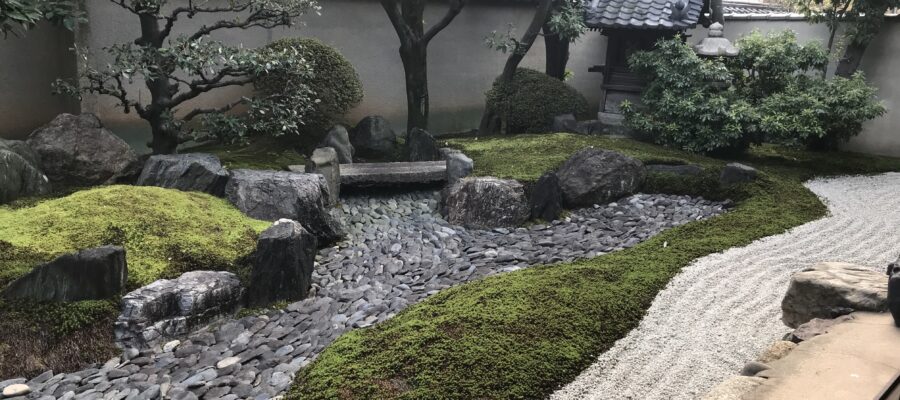信長が足利義昭を招いた寺
信長が時の室町幕府十五代将軍 足利義昭を招いた寺として「信長記」にも記された真如院。江戸時代に出された「都林泉名勝図絵」にも、その庭が掲げられていました。しかし、明治以降度々の改造があり、大変荒廃していたそうです。
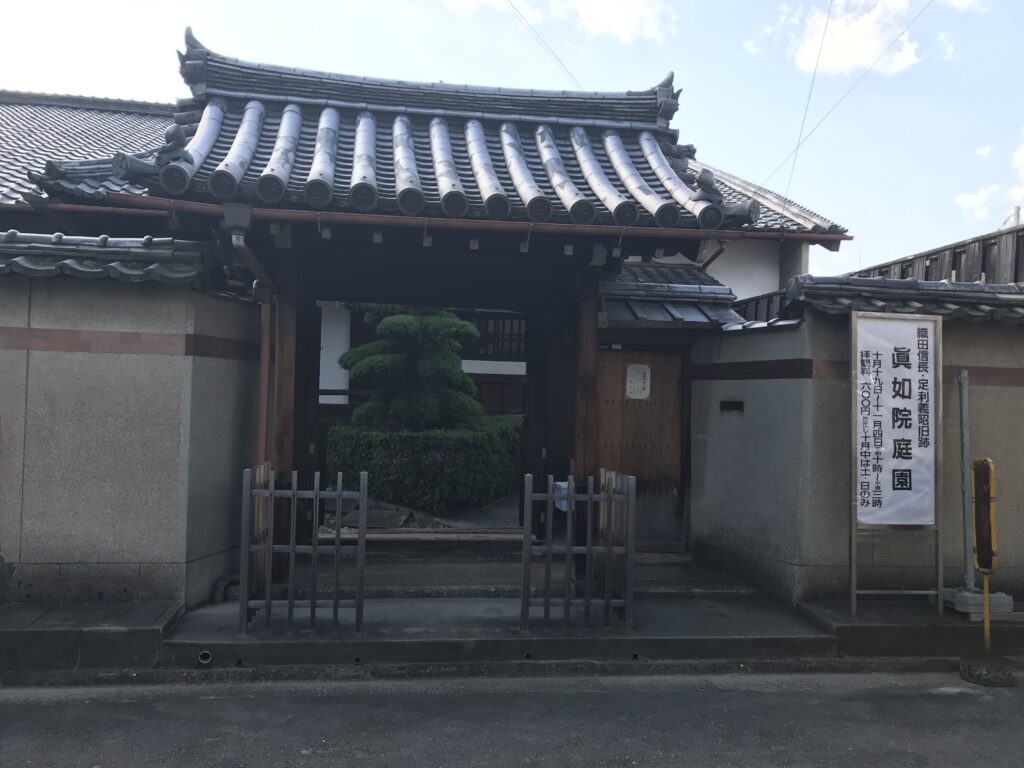
重森三玲が復元した庭
その庭を1961年に復元されたのが重森三玲さんでした。公開期間に訪問した際にいただいたリーフレットに、重森三玲さんが書かれた真如院庭園の文章を読むことができます。敷地の奥行きが半分以下となっていたため、復元も苦労されたそうです。
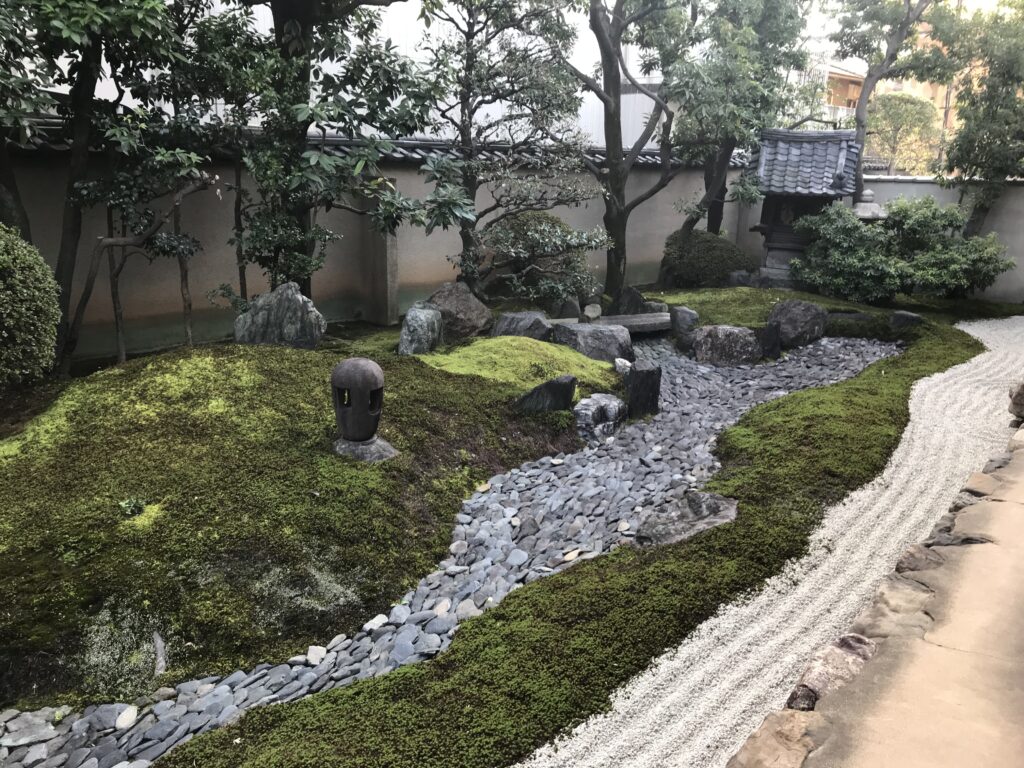
この庭で印象に残るのは、小板石を鱗型に敷いて小浪を表現した水の流れでしょう。この表現法は、室町時代の龍安寺の枯山水から妙心寺の枯山水に移行し、桃山時代に入って一応完成しましたが、元の池庭的な表現が入ってきたそうです。
石で表した水の流れ
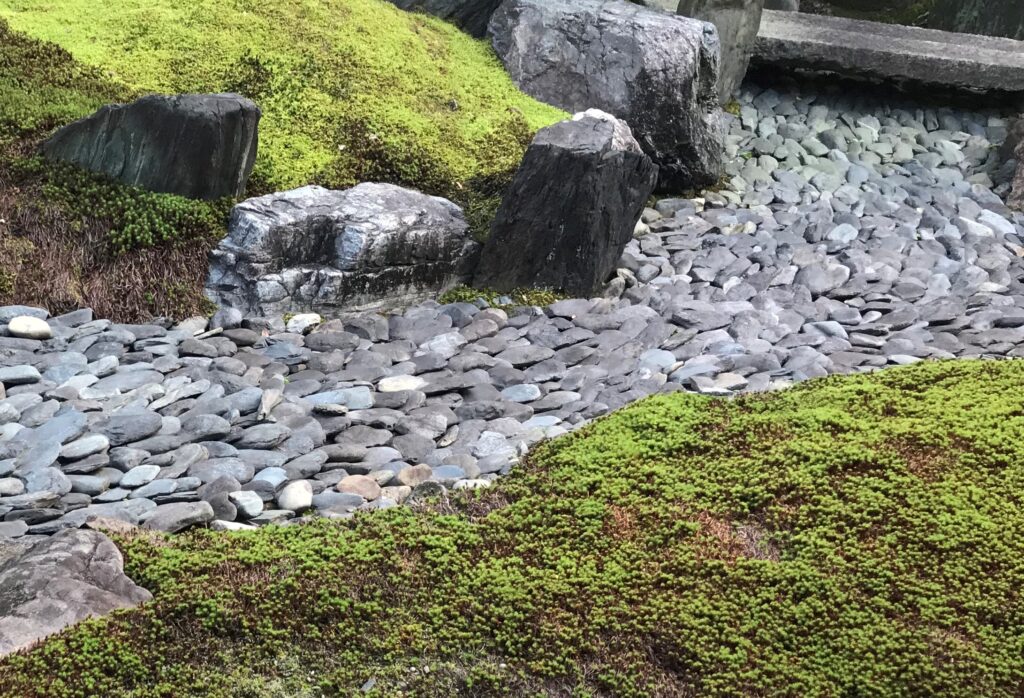
ズームアップして撮影した写真を載せますが、あたかも水が流れるように薄い青色をした鱗型の板状石が何枚も並べられています。水そのもの、流れの方向、流れの速さが見事に表現されています。作庭には三次元の空間把握力が如何に必要か思い知らされます。
ポツンと佇む瓜実燈篭

静的な石の並びで動的な水の流れを作り出す横に、ポツンと年代物の1つの瓜実燈篭が佇んでいます。その佇みが、水の流れをよりダイナミックにイメージさせるのかもしれません。昭和の天才作庭家が蘇らせた名園を是非一度、お楽しみください。(完)
真如院の御朱印
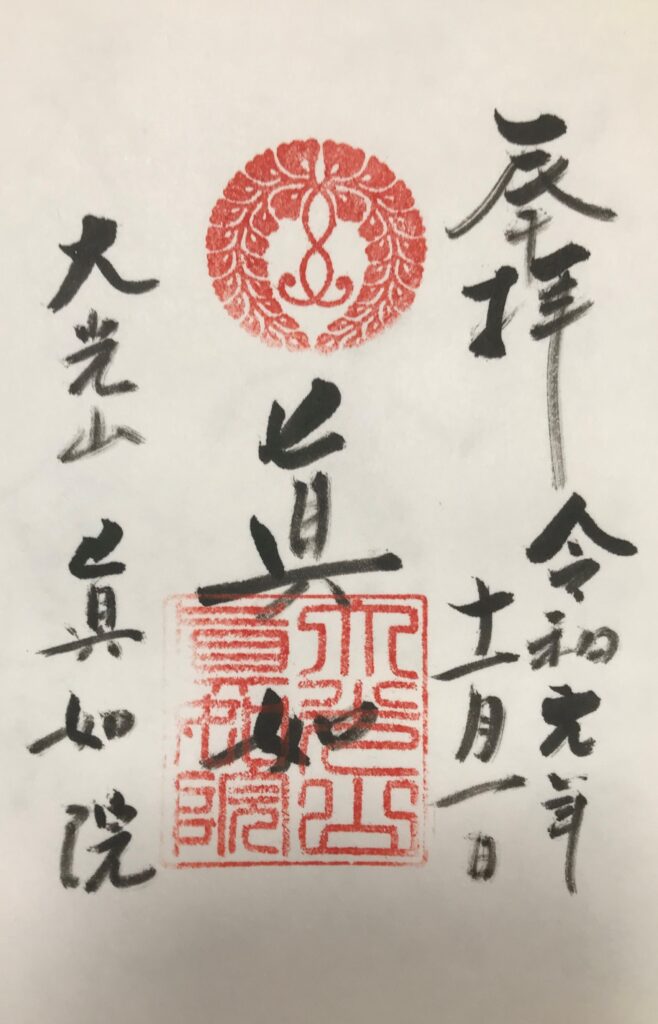
真如院が紹介されている書籍
烏賀陽百合さんの「しかけに感動する『京都名庭園』」に真如院の庭が解説されています。
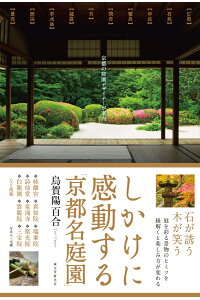
しかけに感動する「京都名庭園」 京都の庭園デザイナーが案内 [ 烏賀陽 百合 ]
価格:1,760円
(2021/5/2 18:44時点)
感想(1件)
Shinnyoin Temple (English)
The temple where Nobunaga invited Yoshiaki Ashikaga
Shinnyoin Temple is mentioned in the “Shinchyo Records” as the temple where Nobunaga Oda invited Yoshiaki Ashikaga, the 15th shogun of the Muromachi Shogunate. The garden was also included in the “Illustrated Guide to the Capital’s Rinsen Meisho” published in the Edo period. However, it has been remodeled many times since the Meiji era and has fallen into great disrepair.
The garden restored by Mirei Shigemori
It was Mirei Shigemori who restored the garden in 1961. In the leaflet that I received when I visited during the open period, I can read Mirei Shigemori’s writings on the Shinnyoin Garden. The depth of the site was reduced to less than half, so the restoration was a difficult task.
The most memorable part of this garden is the flow of water, which was created by laying down small pebbles in the shape of scales to represent small waves. This method of expression shifted from the dry landscape garden of Ryoanji Temple in the Muromachi period to the dry landscape garden of Myoshinji Temple, and was eventually completed in the Momoyama period, but the original pond garden-like expression was introduced.
The flow of water represented by stones
As you can see in the zoomed-in photo below, there are a number of pale blue scaled stones arranged in a row as if water were flowing. The water itself, the direction of the flow, and the speed of the flow are beautifully expressed. I was reminded of how necessary it is to have a three-dimensional grasp of space when creating a garden.
Uri-melon lantern standing alone
Next to the static line of stones that create a dynamic flow of water, there stands a single vintage Uri-melon lantern. The appearance of the lantern may make the flow of water seem more dynamic. Please come and enjoy this famous garden revived by a genius gardener of the Showa era.
Temple Shinnyoin (Français)
Le temple où Nobunaga a invité Yoshiaki Ashikaga.
Le temple Shinnyoin est mentionné dans les “Archives Shinchyo” comme le temple où Nobunaga Oda a invité Yoshiaki Ashikaga, le 15e shogun du shogunat Muromachi. Le jardin figurait également dans le “Guide illustré du Rinsen Meisho de la capitale” publié à l’époque d’Edo. Cependant, il a été remodelé à de nombreuses reprises depuis l’ère Meiji et est tombé en grand état de délabrement.
Le jardin restauré par Mirei Shigemori
C’est Mirei Shigemori qui a restauré le jardin en 1961. Dans le dépliant que j’ai reçu lors de ma visite pendant la période ouverte, je peux lire les écrits de Mirei Shigemori sur le jardin Shinnyoin. La profondeur du site était réduite à moins de la moitié, la restauration a donc été une tâche difficile.
La partie la plus mémorable de ce jardin est le flux d’eau, qui a été créé en déposant de petits cailloux en forme d’écailles pour représenter de petites vagues. Cette méthode d’expression est passée du jardin paysager sec du temple Ryoanji à l’époque Muromachi au jardin paysager sec du temple Myoshinji, et a finalement été achevée à l’époque Momoyama, mais l’expression originale de jardin d’étang a été introduite.
L’écoulement de l’eau représenté par des pierres
Comme vous pouvez le voir sur la photo zoomée ci-dessous, il y a un certain nombre de pierres écaillées bleu pâle disposées en ligne comme si l’eau coulait. L’eau elle-même, la direction de l’écoulement et la vitesse de l’écoulement sont magnifiquement exprimées. Cela m’a rappelé à quel point il est nécessaire d’avoir une vision tridimensionnelle de l’espace lorsque l’on crée un jardin.
Lanterne d’Uri-melon seule
À côté de la ligne statique de pierres qui crée un flux d’eau dynamique, se trouve une lanterne vintage Uri-melon. L’apparence de la lanterne peut rendre l’écoulement de l’eau plus dynamique. Venez profiter de ce célèbre jardin qui a été ravivé par un jardinier de génie de l’ère Showa.
